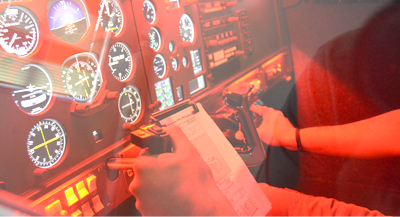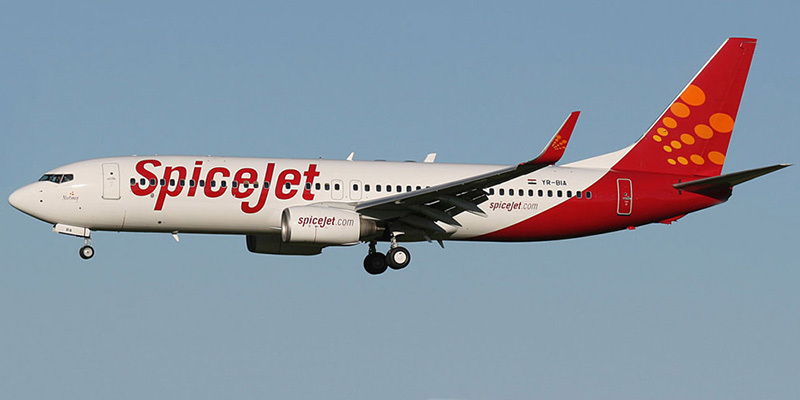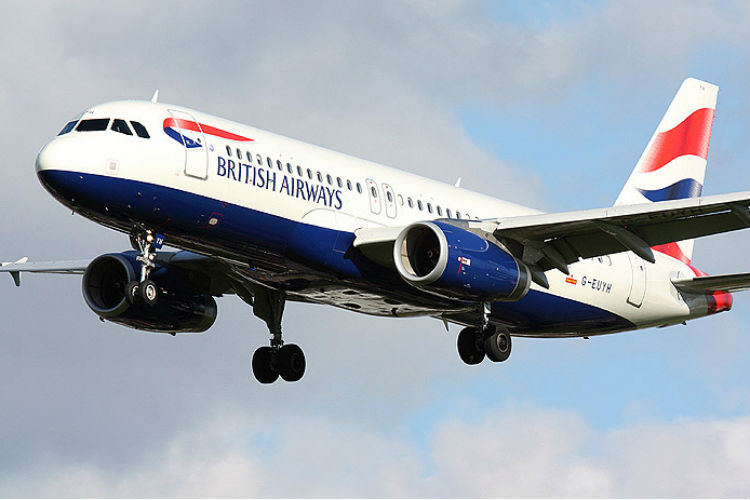We have included this section to help and explain the opportunities available to those students who continue to work towards the professional Pilot License level, and there after how to get about with their “way forward” plans. I’ve also thought it prudent to include some of the many pitfalls or setbacks that await the financially unwary in what is otherwise a very honorable profession.
Before you begin
Before you embark, it is most important that you get a assessment from your country’s “Civil Aviation Dept;” about the recognition of the license you are hoping to get, Is the License fully recognized by your civil aviation when you return back home., ..? the conversion process…! Do you require to sit the entire papers once again and only 50% of your flying will be counted towards the conversion. If so why you should go to a state where there is no recognition for those licenses ..?
Based on what you have obtained in a foreign country, some states require the national to complete only the “Aviation Law” examination and appear for the GFT and IRT. Another may require to sit for a “Composite Paper” and the GFT/IRT. Others may require to sit for the entire set of commercial papers and GFT…etc. Hence, it is most advisable that you have a discussion with your aviation authority prior to selecting and embarking on a course of training.
At the same time inquire about your national and other carriers’ recruitment program. Some airlines may want specific licenses, although the other licenses may be acceptable and convertible by your CAA. Check for other qualification required in addition to the pilot licenses…
Often newly qualified professional pilots and their parents are dismayed at the lack of career guidance from some of the general aviation flight schools. These schools are happy to take your money, but least interested to offer any guidance or advice after you qualify. This isn’t difficult to understand if you check the backgrounds of most of the management and instructors of these so-called “professional flight schools.” It is always advisable to do a research on FTOs prior to selecting one for you to attend. Speak to your friends who has completed courses with FTOs, which you have short listed. The money you spend there will be comparable to a bachelors degree program or more. You’d research the university wouldn’t you? Well the same applies here.
Some schools require huge deposits, including non-refundable fee, Immigration approval fees…etc, in addition a major part of the total course fee up front, with balance of payment shortly thereafter. Be very careful here! While it is true that operational costs of aircraft and study material are very high, there should be no good reason why you cannot “pay as you go.” If you part with all your money up front, and then decide for some reason to terminate your training mid stream, you are likely to be penalized very heavily – in some cases loosing the balance of your funds entirely, some schools declare “bankruptcy” , . You could try going the legal route to get it back – but would the time, money, effort and frustration be worth it? Some schools are banking on your answer being “No.”
Also make sure that a complete breakdown of costs is provided, otherwise you may find yourself scheduled to fly a simulator or a single when you thought you’d paid for a twin. DON’T FALL FOR THE “PACKAGE DEAL”. Get a clear hourly rate on the specific aircraft type you’re going to be flying.
Make sure the small print doesn’t penalize you if you take longer to complete the course than expected. Some schools make promises as to the time frame required to complete a course, then charge penalties if extra time is needed to do so – even in unforeseen circumstances!
Keep all receipts for money handed over – the lawyers will need them in the event of a reclaim on any unused funds.
Cadet Programs
Often you may note that many mega airlines have their own “cadet pilot” training programs for their own nationalities. These programs are being sponsored by respective airlines and those eligible will embark on flying training from ab-initio to professional pilot license standards, with a “frozen ATPL” status at the end of the course. Some programs continue with “Line Orientated Flght Training (LOFT) engaging a corporate jet, may be a Citation or Lear to carry out company routes prior to F/O training. This LOFT aspect will provide knowledge on company routes, practice of company SOPs…etc., Singapore, Malaysian, Cathay need to invest in their industry because their traditional supply of pilots from the military has all but dried up. Present day Airforces are also tending towards signing their pilots to lengthy training bonds to safeguard their massive investments. Consequently, most airlines rely heavily on recruiting civilian-trained aircrew to fill their vacancies. The retirement age for international airlines is 60 while some domestic carriers and freight operators extend it to 65 – much the same as other professions. In order to address the impending pilot shortage some airlines may increase the experience levels of the junior pilots before the seniors retire.
It’s worth doing some research to see if you are eligible to join a cadet scheme in your country’s national airline. This will save you and your parents a lot of money. Not all airlines have a training bond for this program but undoubtedly those that don’t will reconsider that policy shortly. In any case signing a bond in this case is definitely worthwhile. Bear in mind that all cadet schemes have their own selection criteria, along with academic and medical requirements.
Unless you wish to become a career military pilot it generally isn’t worth signing such a lengthy contract (on average ten years!) in exchange for what essentially amounts to limited hours on military aircraft. On average, civilian pilots tend to fly more hours than their military counterparts. Also, civilian salaries are usually higher than the military’s. More importantly, the lengthy contract will delay your entry into an airline and consequently negatively affect your seniority number. You can buy yourself out of these contracts, but this is usually at an enormous price.
Outside the Airline
Not all pilots choose an airline career. There are many other specialties just as rewarding. Other areas available are crop spraying, although I don’t recommend it if you intend going the airline route. Same goes for Geophysical Survey flying. This is because although the flying is incredibly precise and challenging – it is a single crew operation in an informal environment. Airlines prefer hiring pilots with multi-crew, multi-engine experience from structured environments. Nevertheless – it is well paid but obviously seasonal. Some crop sprayers alternate their work between northern and southern hemispheres to work all year long.
Charter
allows you the freedom to operate a variety of different aircraft to a multitude of destinations the clients require. It’s extremely enjoyable and challenging as the routes and requirements are never the same. The demands make it more of a young mans job and hence a stepping-stone towards an airline career.
Corporate Aviation
involves operating a company jet at their behest. Depending on the company it could involve international routes and often involves dealing with VIPs and the company’s directors on a personal level. Many large companies internationally have their own flight department. The only drawback is if the company shares take a dip it’s usually the jet that’s sold off first, leaving you without a job. But still – good work if you can get it.
Contract flying
Extremely challenging as the company you fly for will place you wherever the need arises. This could involve anything from delivering food aid to an impoverished African country to ferrying UN personnel in the Middle East.
Helicopter flying
A specialty of note. This could involve anything from flying off the oil rigs in the North Sea to fire fighting and rescue work. This is predominantly the domain of the ex-military pilot as although you can qualify privately, the extreme costs involved in getting experience ensure that ex-military helicopter pilots are more likely to get the good civilian helicopter jobs. Unfortunately it’s not as well paid as fixed wing jobs, as in this area supply does indeed exceed demand.
Flight Instruction
For those predisposed to it, instruction is the most rewarding of all the disciplines. Also the most challenging. There will always be a demand for trainers in any company. Whether at abinitio level in flight schools or at an advanced level in the airlines, the challenges and rewards are ever present. Flight instruction at primary level in the flying schools is very demanding as your students are in the “learning curve” and require much more time, effort and input.
Airlines have their own training staff and the job involves converting experienced crew onto a specific type of aircraft. Extensive use of simulators is required for this task. The new pilots are transitioned by training captains and pilot instructors in the simulator, then paired off with a training captain for tutoring en-route for number of sectors as per the company policy for the respective aircraft and end up with the final sim-check and you are a “qualified 1st officer”. At this level, each aircraft type is a specialty, and the process takes upwards of three months to complete. The training department in an airline is usually a separate career path from the ‘line pilots’ – the staff all being active airline pilots selected into these training positions by the department. To be eligible for selection the candidate must hold a valid instructors rating in some airlines and other do not insist, they select from the ‘line pilots” and they reach instructcor status in phases ie. Route training instructors, simulator instructors, base training instructors, few Training captains are qualified in all three segments. – hence the reason I encourage my prospective student pilots (who have the aptitude), to study for their instructors rating. Having this rating could benefit your career prospects within any company.
Possession of a “instructor rating” will always assist you in gaining hours without any cost on flying, this also help you to maintain your license currency at all times, which is an expensive exercise, and if you happen to renew your license every six months if you are not employed as a pilot..! Also be mindful that you are also updating your knowledge in the ground school department as well, every moment whilst employed as an Instructor. When you are sending your cv for a “pilot position” you feel that you are better prepared than those who are not current in the profession. An Instructor endorsement in your license will not go waste at all..
What it takes
Contrary to popular belief, not everyone has the ability to become a professional pilot. In fact, some people shouldn’t fly at all! Not because they can’t fly well – but because they can’t think well! Cocky, over-confident, egocentric pilots are not desirable and tend to be short lived in this job. The saying “there are old pilots and bold pilots – but no old bold pilots” is true. With the responsibilities and consequences involved, you naturally need to be supremely confident in your ability to do the job – but not to the point where ego exceeds ability. Mental attitude is everything. Throughout your career, confidence must be tempered with humility. One never stops learning in this game and you must have the ability to learn from others’ mistakes. You wont live long enough to make them all yourself.
Under confidence is just as dangerous as overconfidence – so good self-esteem is essential. These are the reasons most companies require a psychometric evaluation before they’ll consider employing you.
Medically, many impediments that were an immediate disqualification years ago are now acceptable, as long as they can be corrected. Eyesight for example.
The air force still has more stringent medical standards for their recruits but that’s because their financial investment and risk is greater. Should you lose your medical while employed as a professional pilot most company’s have a Loss of Licence insurance to cover, till you’re fit again or even a lump sum payout if you’re permanently boarded. Several insurance companies are happy to insure individuals under a similar policy and it’s obviously advisable to have this cover if you’re self-employed.
Academically, it obviously helps to have Maths and Science to O/Level but even if you haven’t, there’s nothing to stop you taking extra lessons to get up to scratch in these areas. Remember; you will be competing against other candidates for the top job, and the more attractive your qualifications and experience are, the better. Airline selections are conducted on a point system and you will score points for experience and qualifications. Having an ATP, Instructors Rating, Multi crew, Multi engine, Turbine endorsement, all count for big points. Another factor is the age/experience ratio. Obviously the older you are, the more experience the airline expects to see you with.
Remuneration
Obviously this is a difficult subject to generalise on as salaries vary extensively around the world.
Crop spraying is renowned as being a well paid job but this will be cyclically dependant on the season and whether you are prepared to work in outlying areas and switch hemispheres as required.
Charter likewise depends on the local economy and its practitioners can do very well indeed during the fat times and less so during the lean.
Contract flying is usually dollar based with good salaries and allowances while working but only a retainer between rotations. Rotations are usually 6 weeks on 3 weeks off.
Generally, corporate and airline jobs pay the best with some Middle Eastern jobs paying in the region of 6,000 to 10,000 US dollars per month tax free, depending on your rank and seniority. Inducements include a company sponsored pension plan. In addition housing, education and medical aid is usually free. European airlines, Easyjet, Go Airlines, and RyanAir pay substantially less and without the fringe benefits, hence their turnover of pilots is higher. One cargo airline in the Far East pays their Captains in excess of 15,000 USD / month tax free. Co-pilots earn around 11,000 USD. And that’s not counting allowances! Also it is noteworthy to mention that Indian private carriers Kingfisher, Jet..etc too follow similar scales to attract crews from the region.
In the USA salaries are generally not very good in the lower echelons. And only once you become a Senior Captain in a major airline will it be comparable. (In most major airlines this could take 18 years!)
I hope this chapter goes some way in helping you make a decision about your future. Obviously all the aspects cannot be covered in such a short section so if there’s any further advice you need please feel free to contact myself at the contact addresses on this website or my mobile phone..
Best of luck,
Capt Suranjan De Silva
ATPL;IRE/CRE;FIE;FEE:
MCMI;MCILT;AMRAeS(UK),
Director / CEO & Head of Pilot Trg;
Asian Academy of Aeronautics
Aviation Consultant / CAA Flight Examiner
Mobile 1: +960 759 9149 (Maldives)
Mobile 2: +94 777 342 173 (Sri Lanka)
Email: ceo.ht@aaa-fta.com
Alt: pesuren@sltnet.lk





